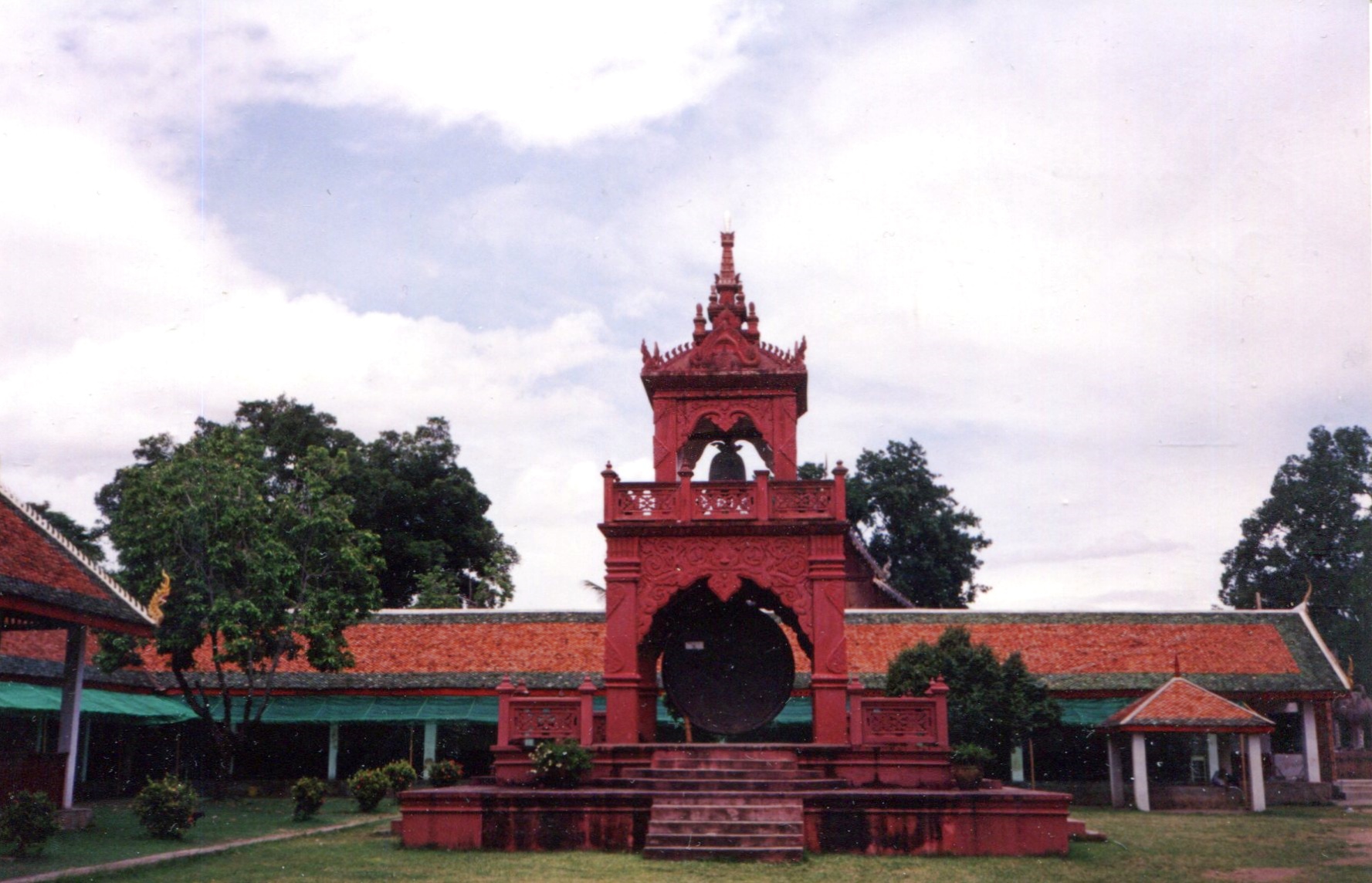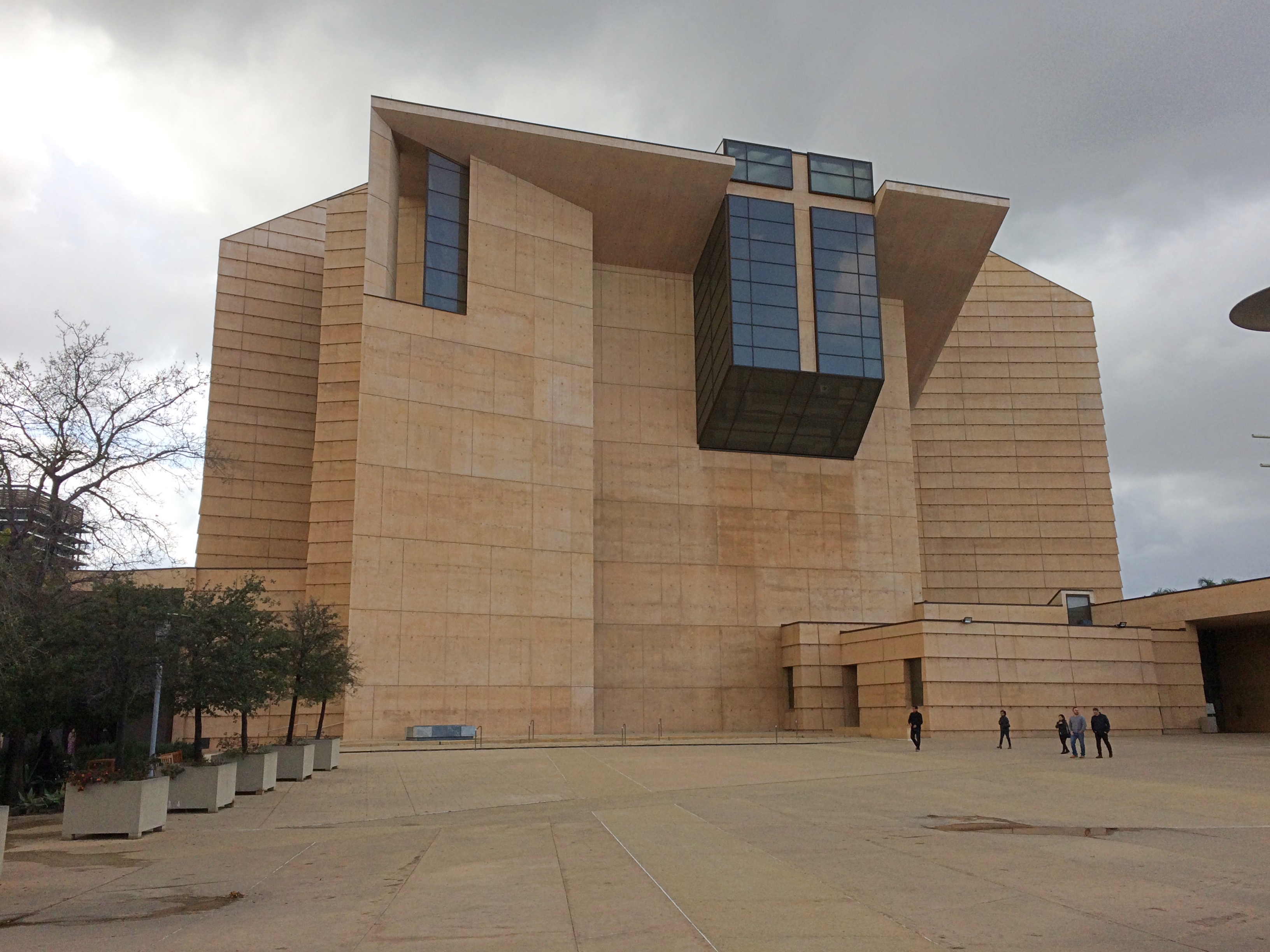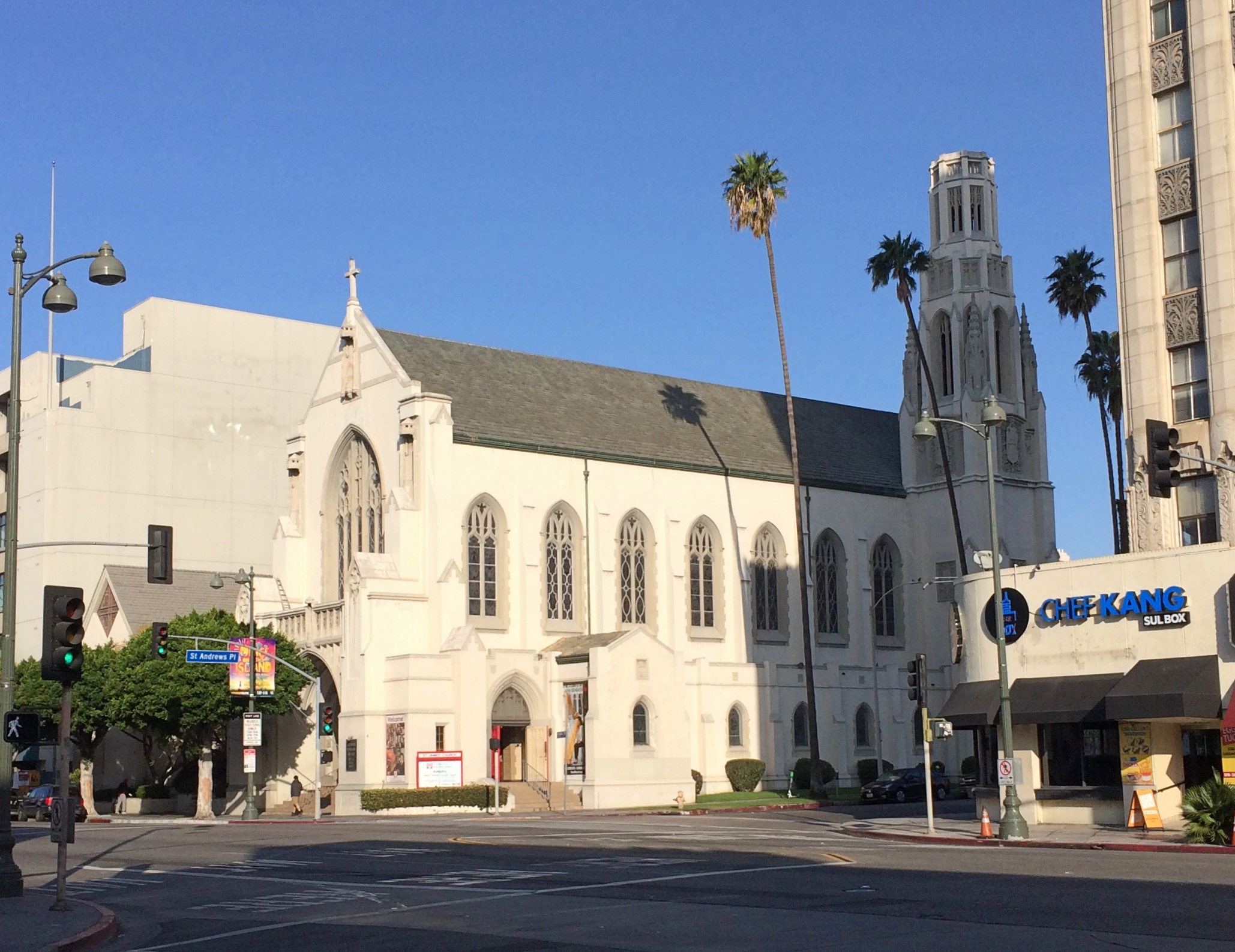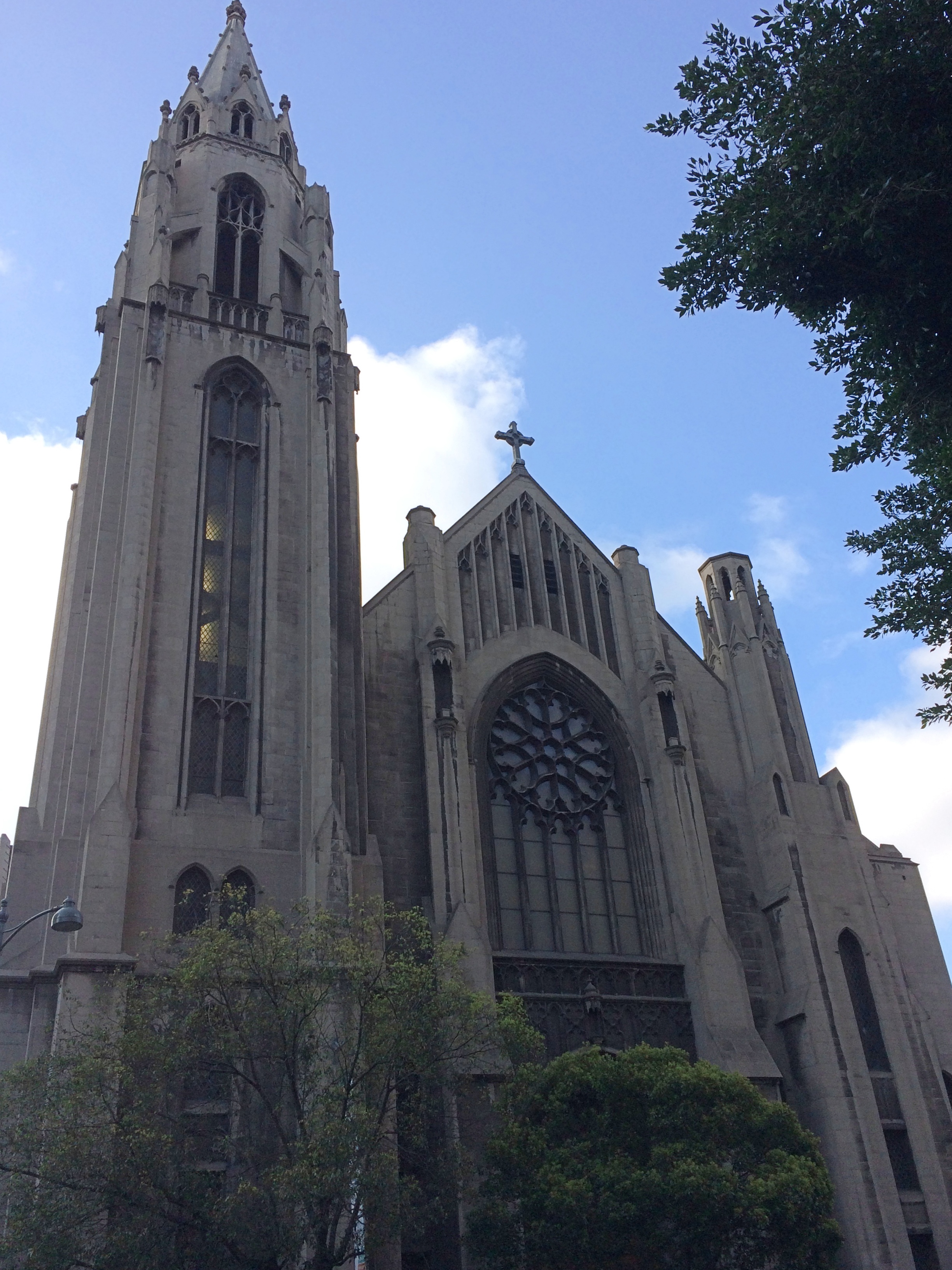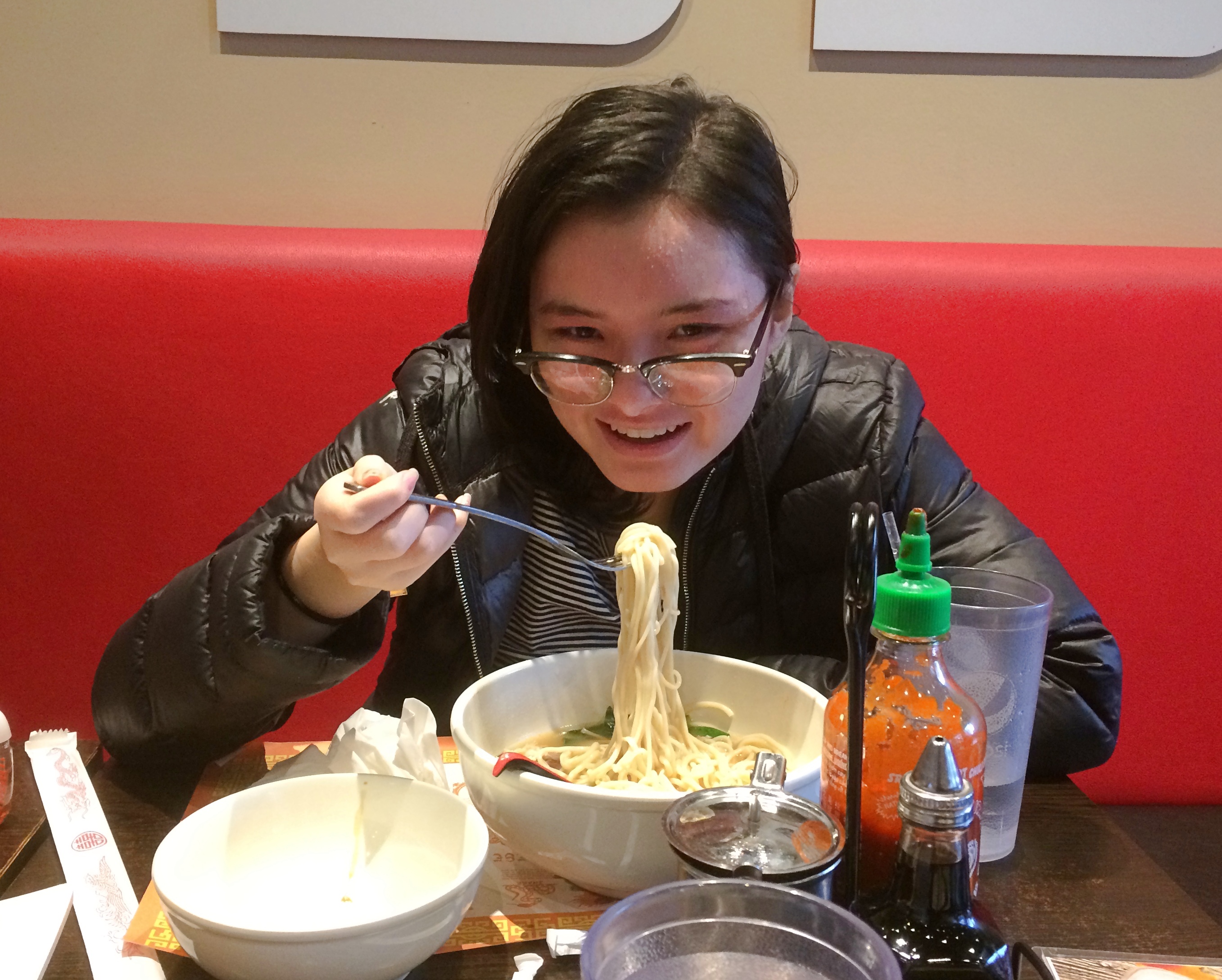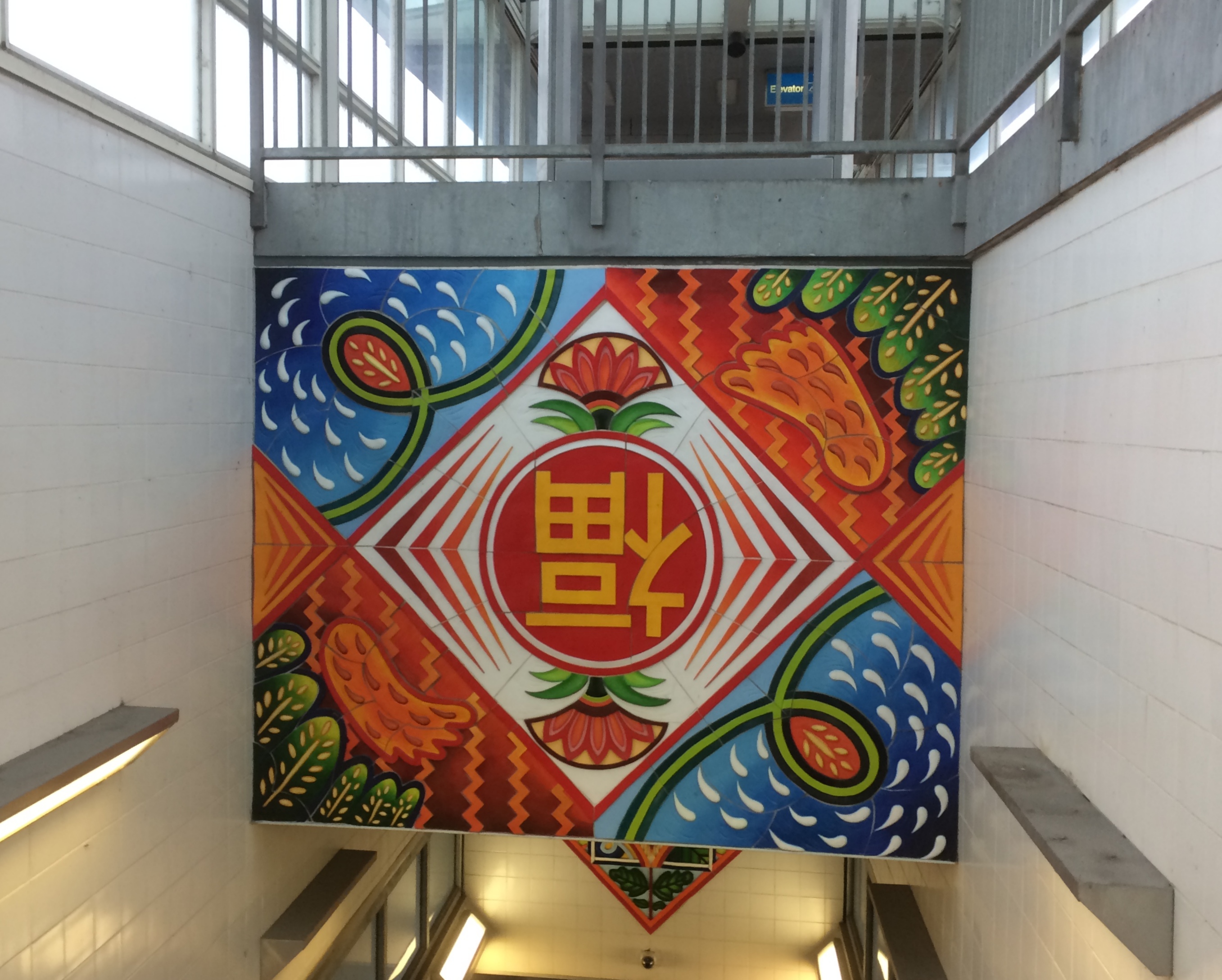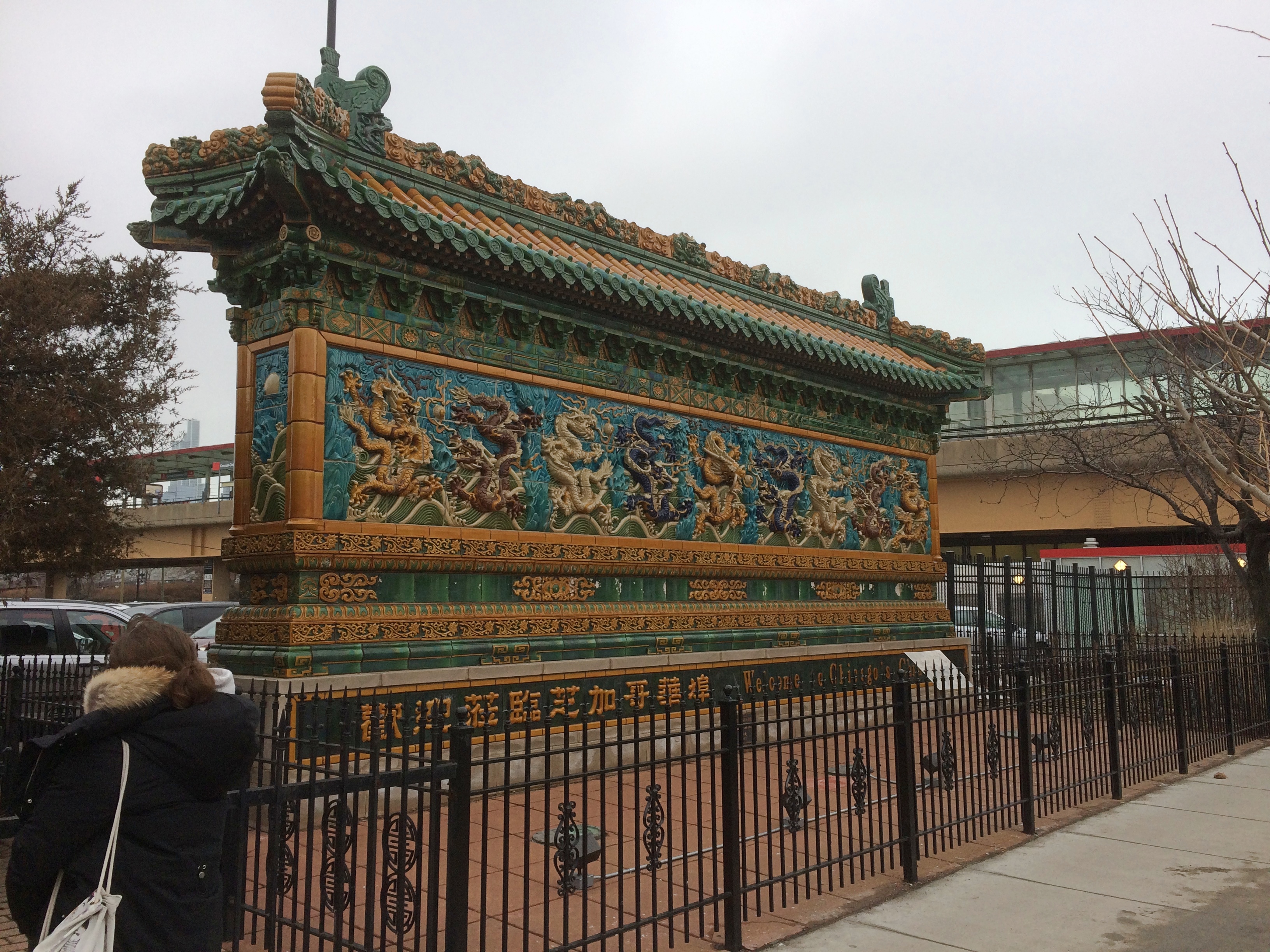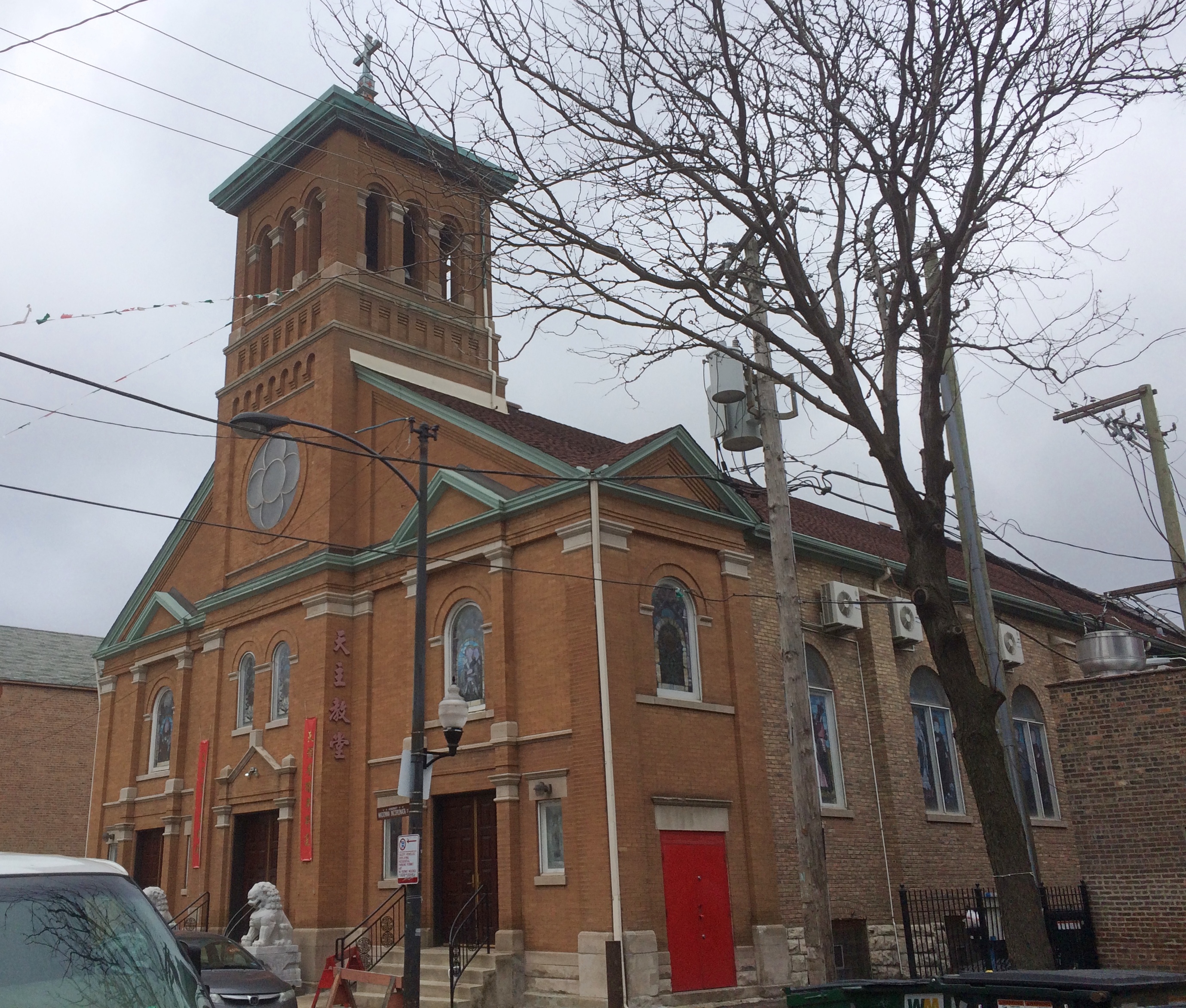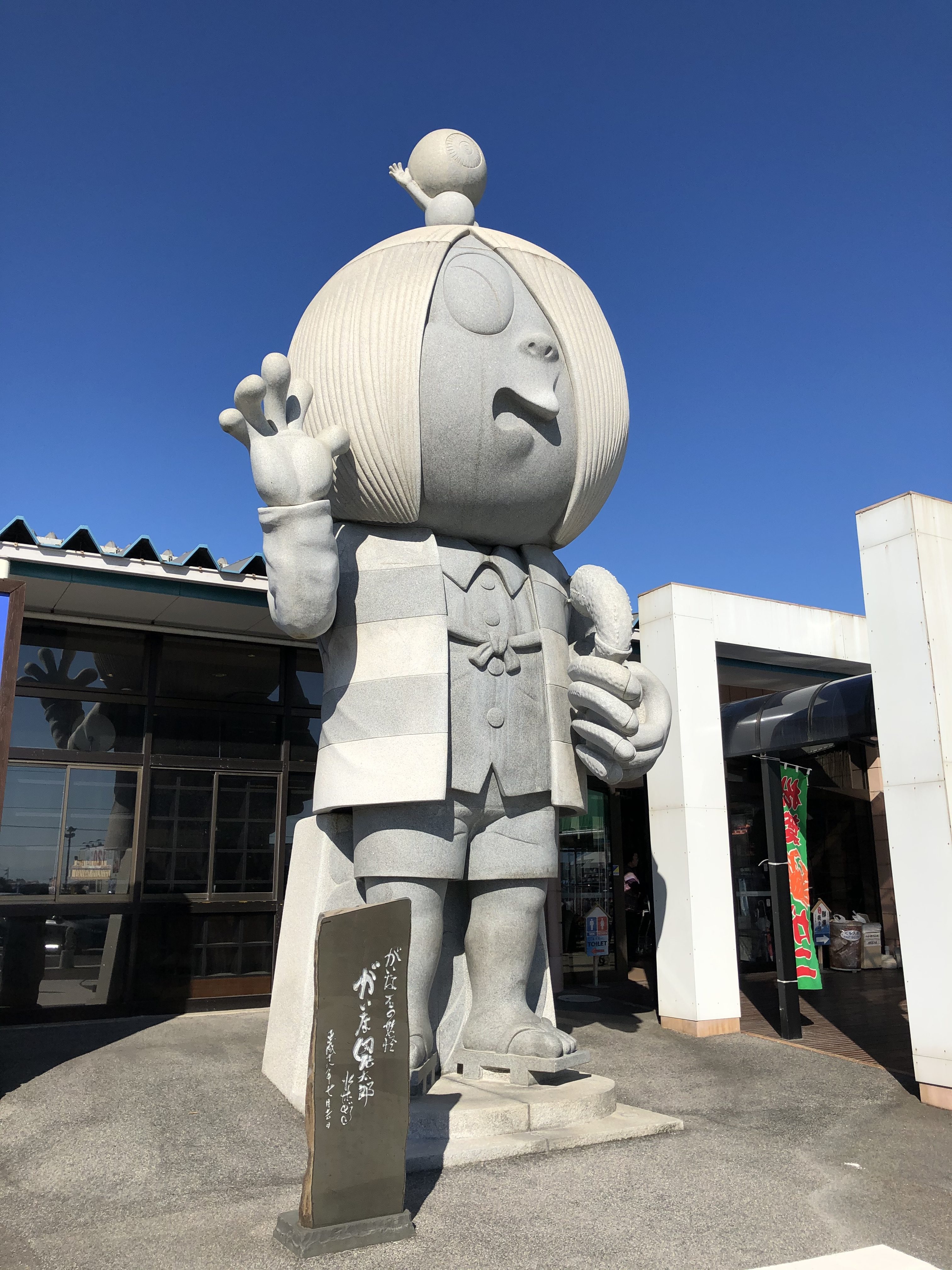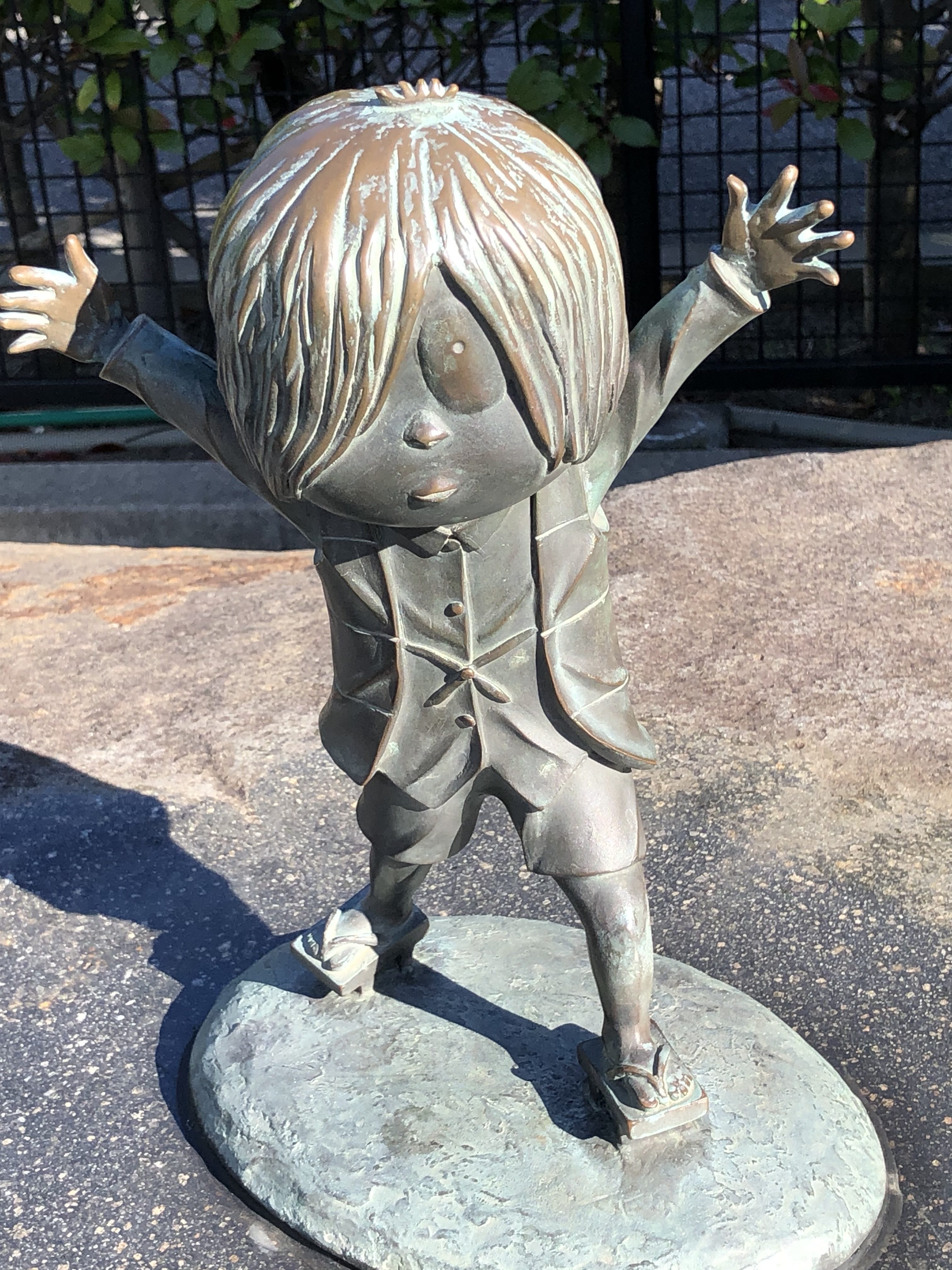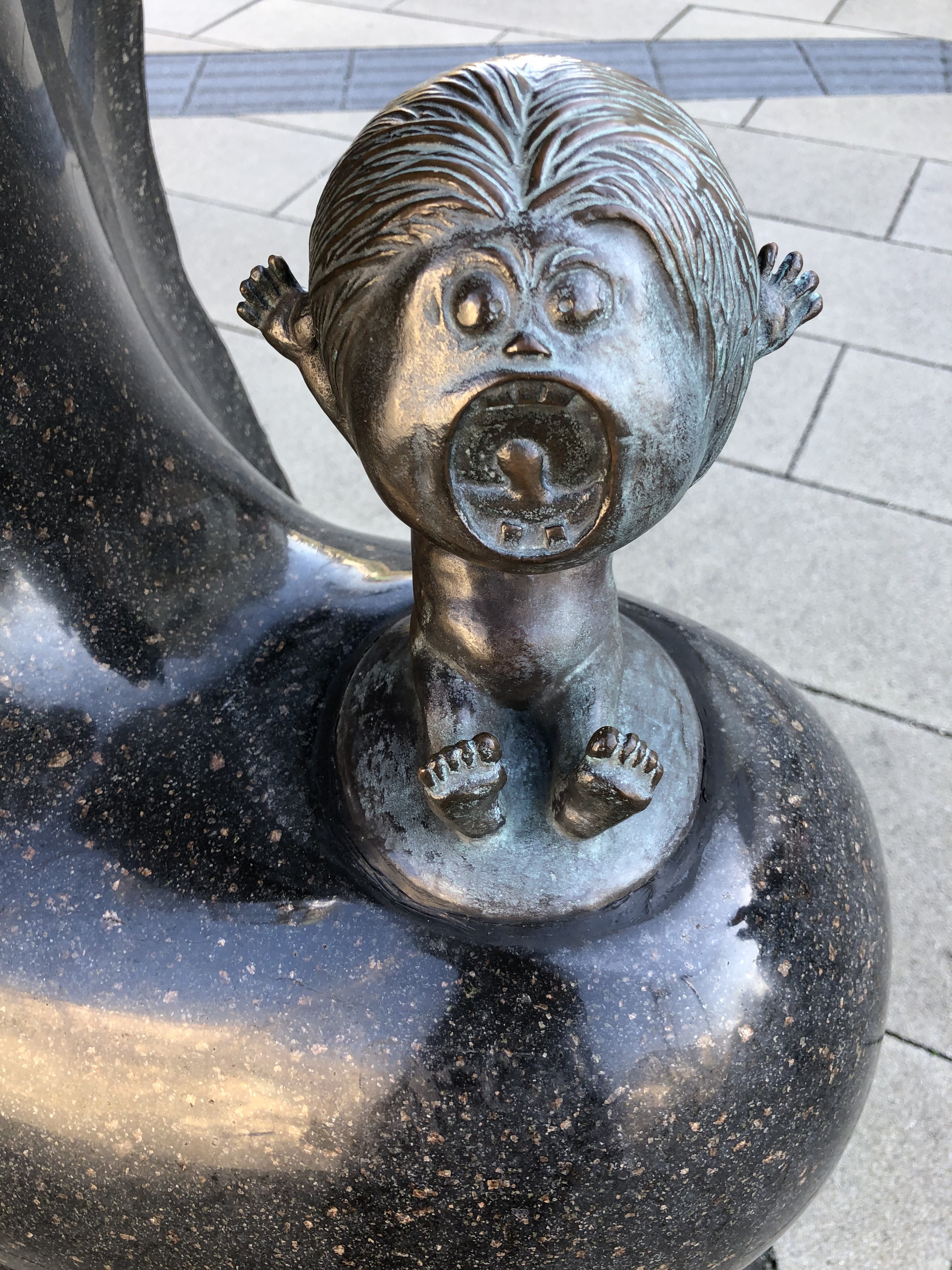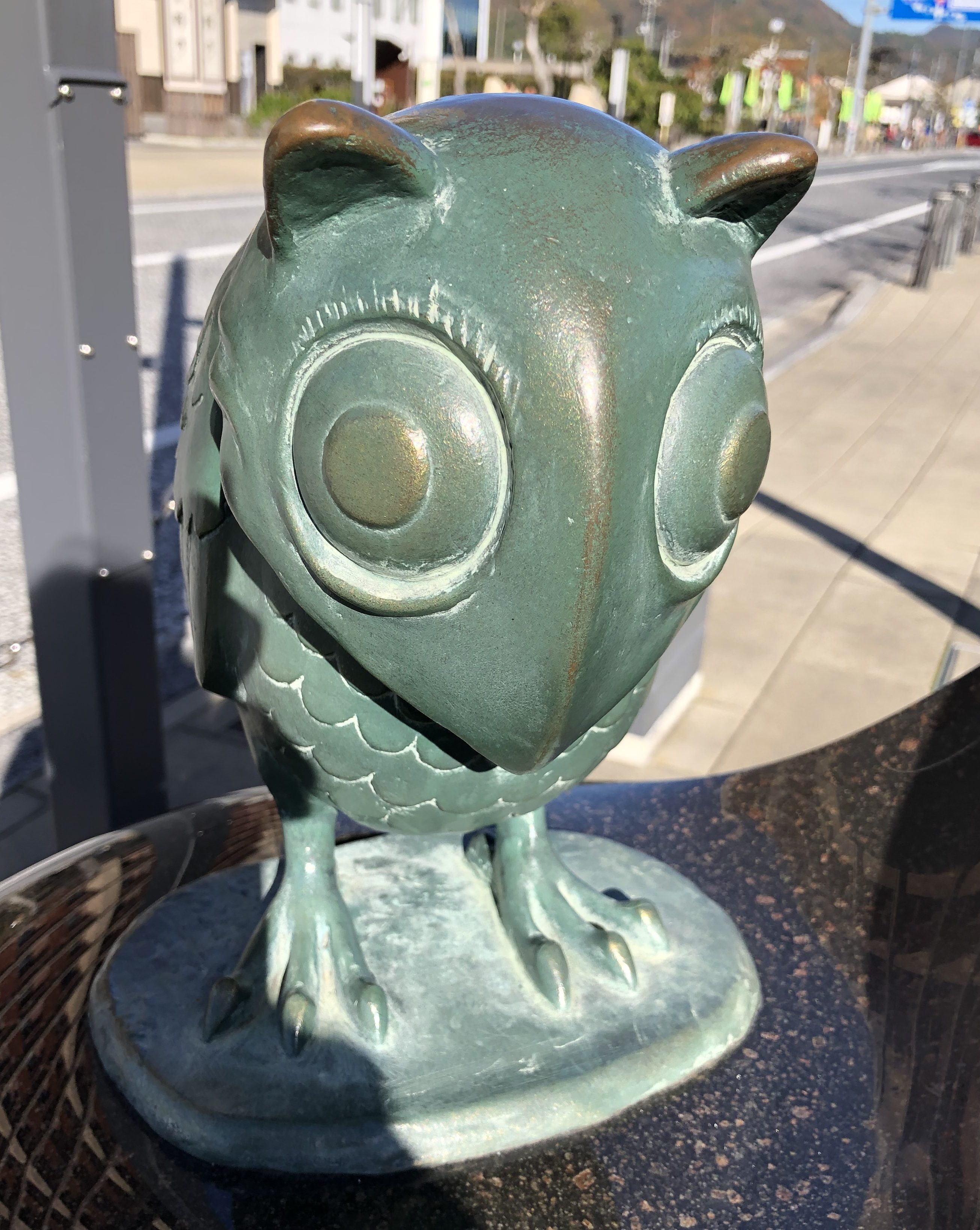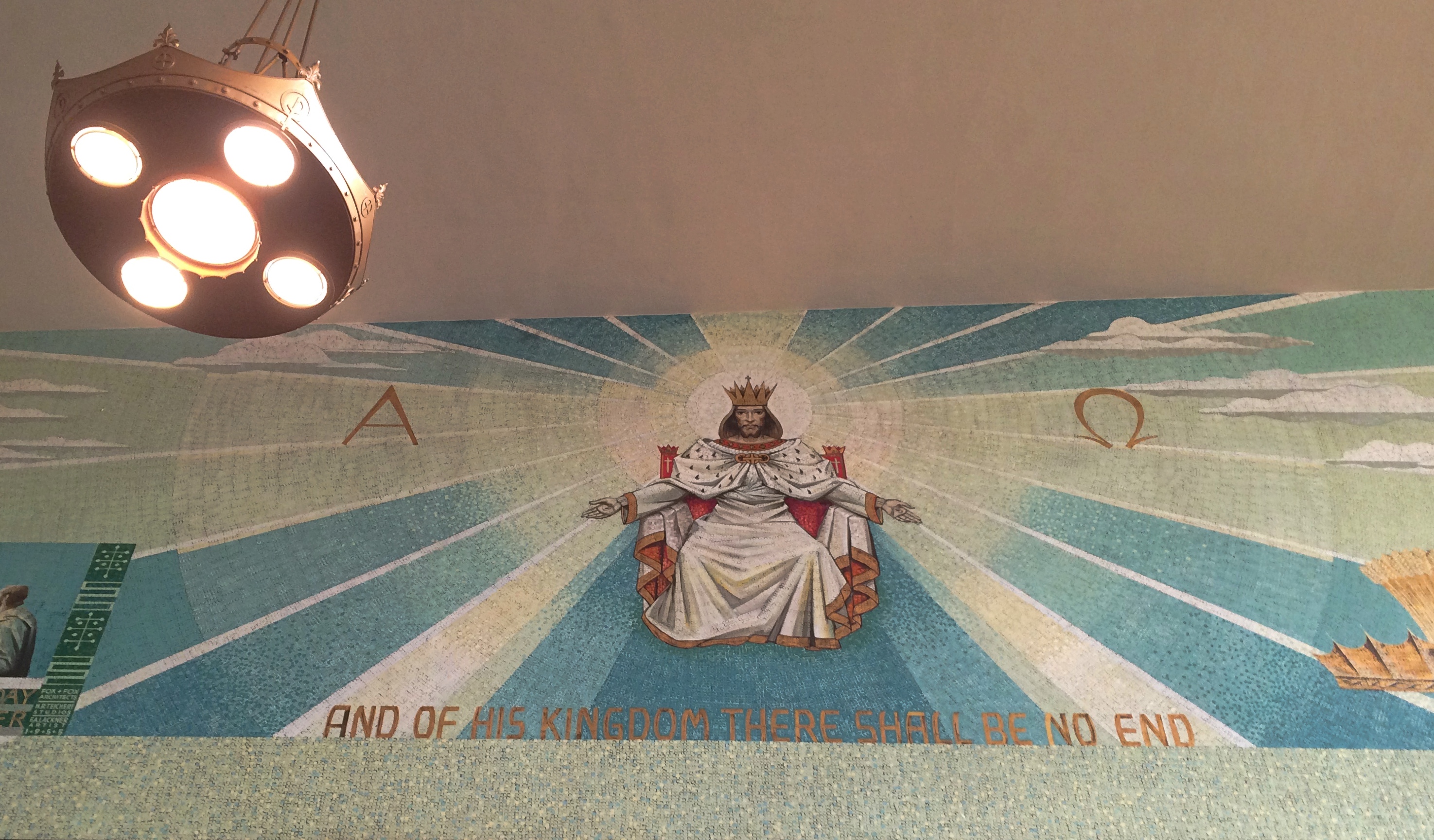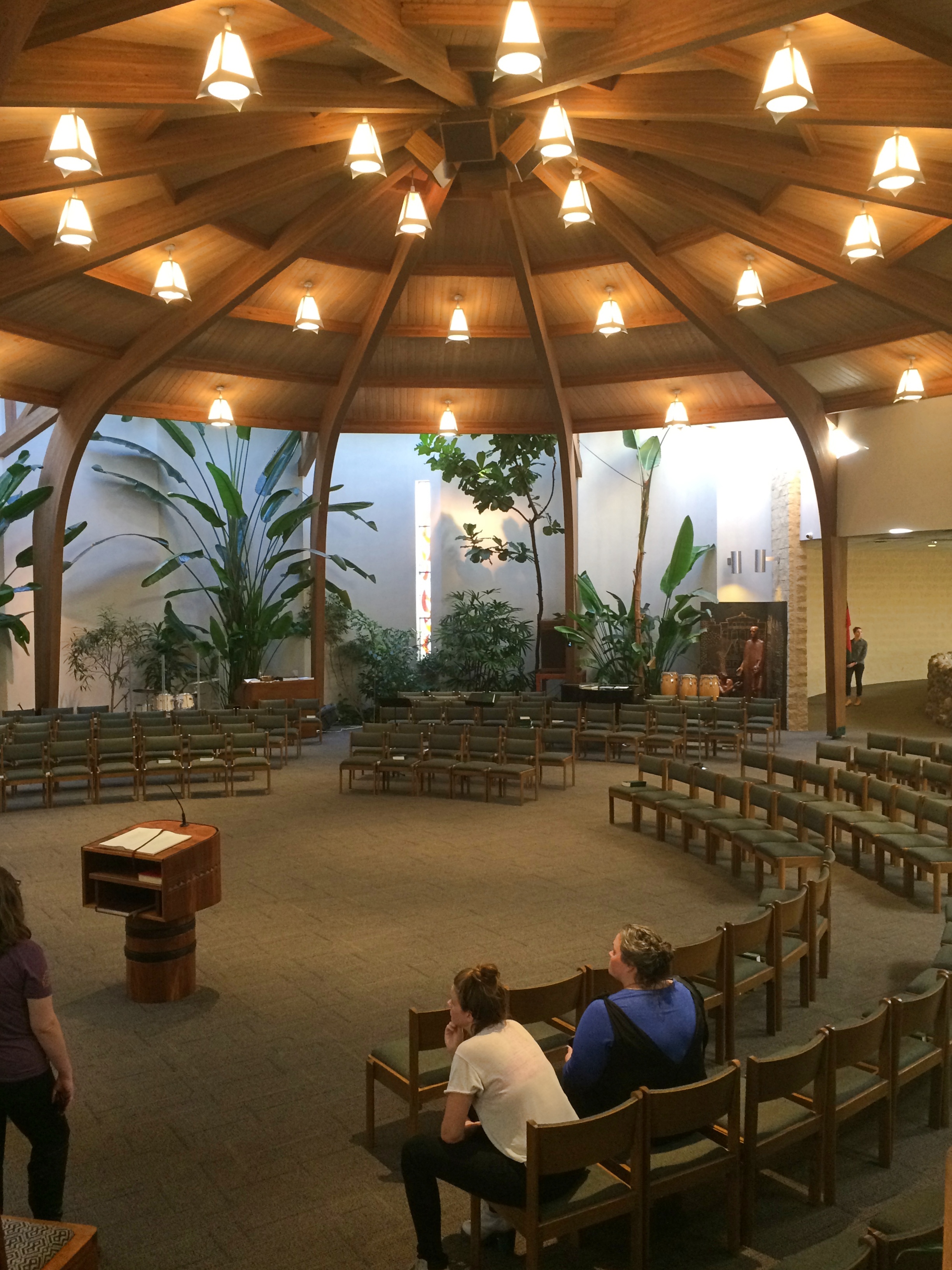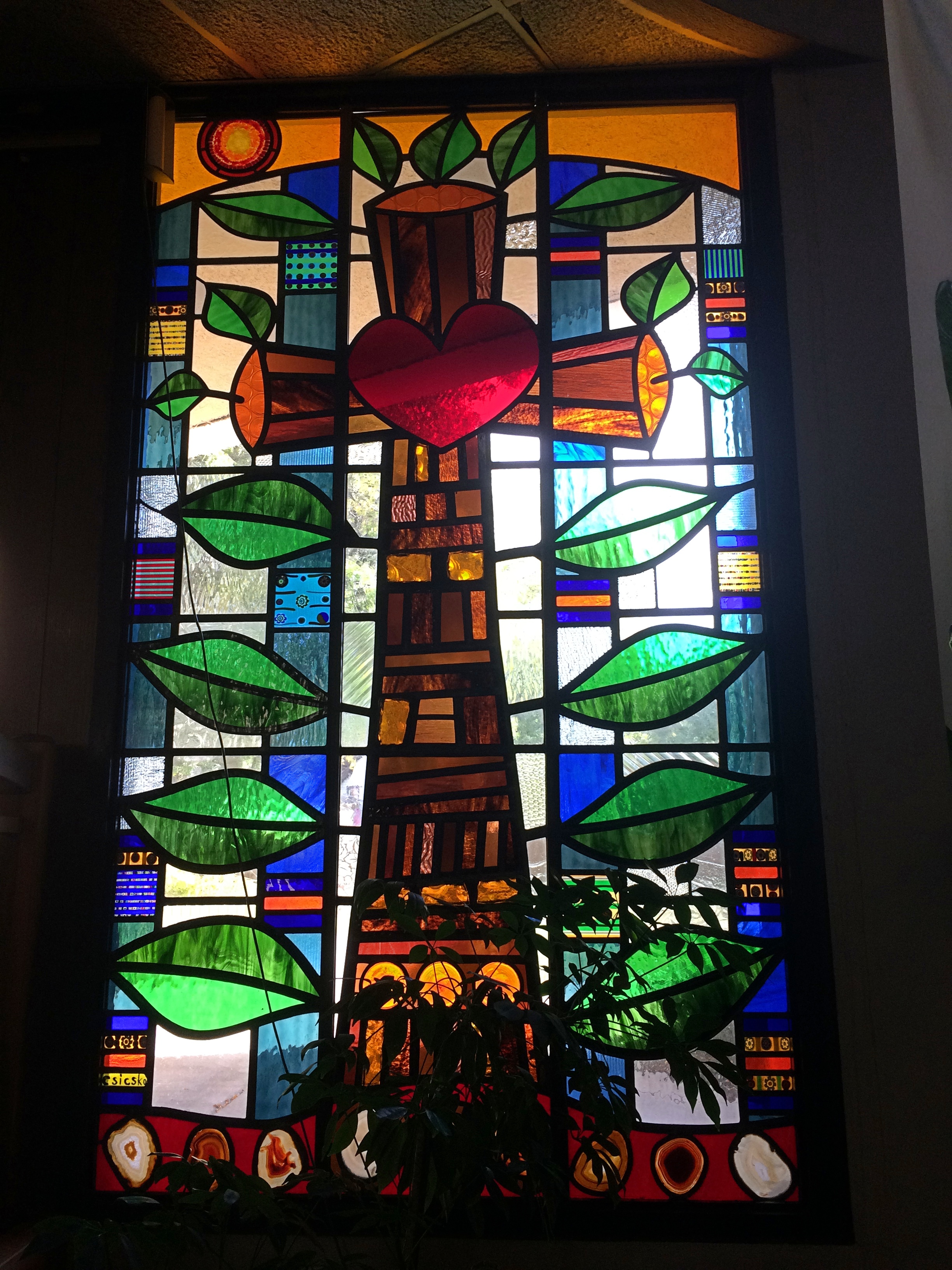My recent visit to Southern California involved a lot of motion, by car and light rail and on foot. By the time I got to Palm Springs, I was ready for an easier time. Steve and Jack’s hospitality made that possible for me from late afternoon on February 24, when I arrived, to the morning of the 26th, when I left.
If you have the means, Palm Springs is a good town for taking it easy, especially in the winter, which is like a pleasant springtime in a lot of other places. The full day I was in town involved getting up late — a necessary part of any easy day — looking around Palm Spring’s main shopping street and some of its neighborhoods, including visits to a few shops, then lunch and a drive out to the town of Indio to see its main tourist attraction.
If I’d been in full-tourist mode, I might have taken a closer look at some of the town’s modernist houses, or visited its art museum, or taken a hike in the hills, or ridden the Palm Springs Aerial Tramway. If I were another person all together, I would have played golf. I hear a lot of people do that in wintertime Palm Springs, and maybe that’s why Gerald Ford spent a lot of time there.
I took in a few sights. Such as the view across the street from Steve and Jack’s.
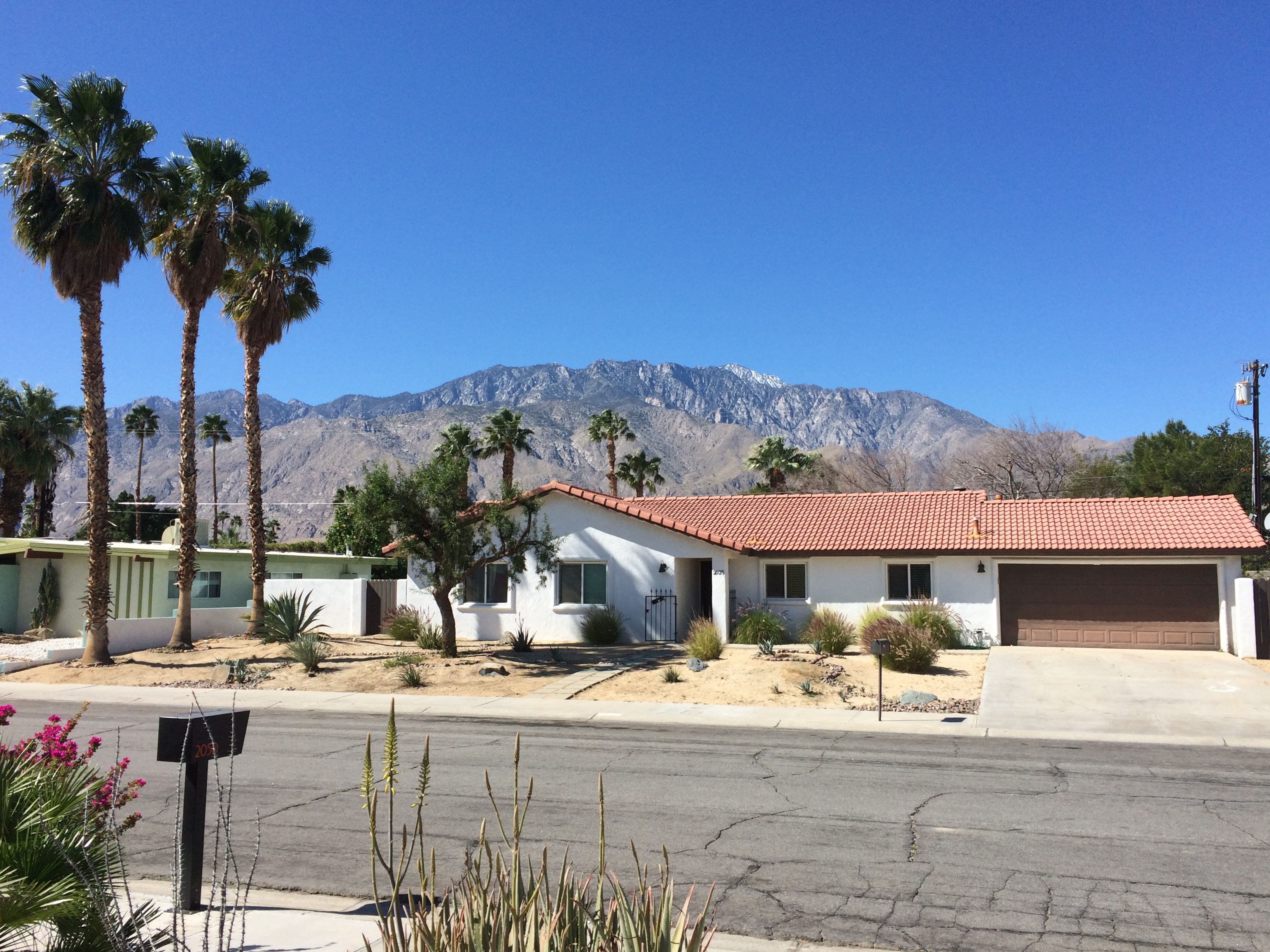 We took a stroll down Palm Canyon Dr., which includes restaurants, tony shops, tourist shops, design showcases — modernism is the thing, an aesthetic fully occupying a number of shops — and more.
We took a stroll down Palm Canyon Dr., which includes restaurants, tony shops, tourist shops, design showcases — modernism is the thing, an aesthetic fully occupying a number of shops — and more.
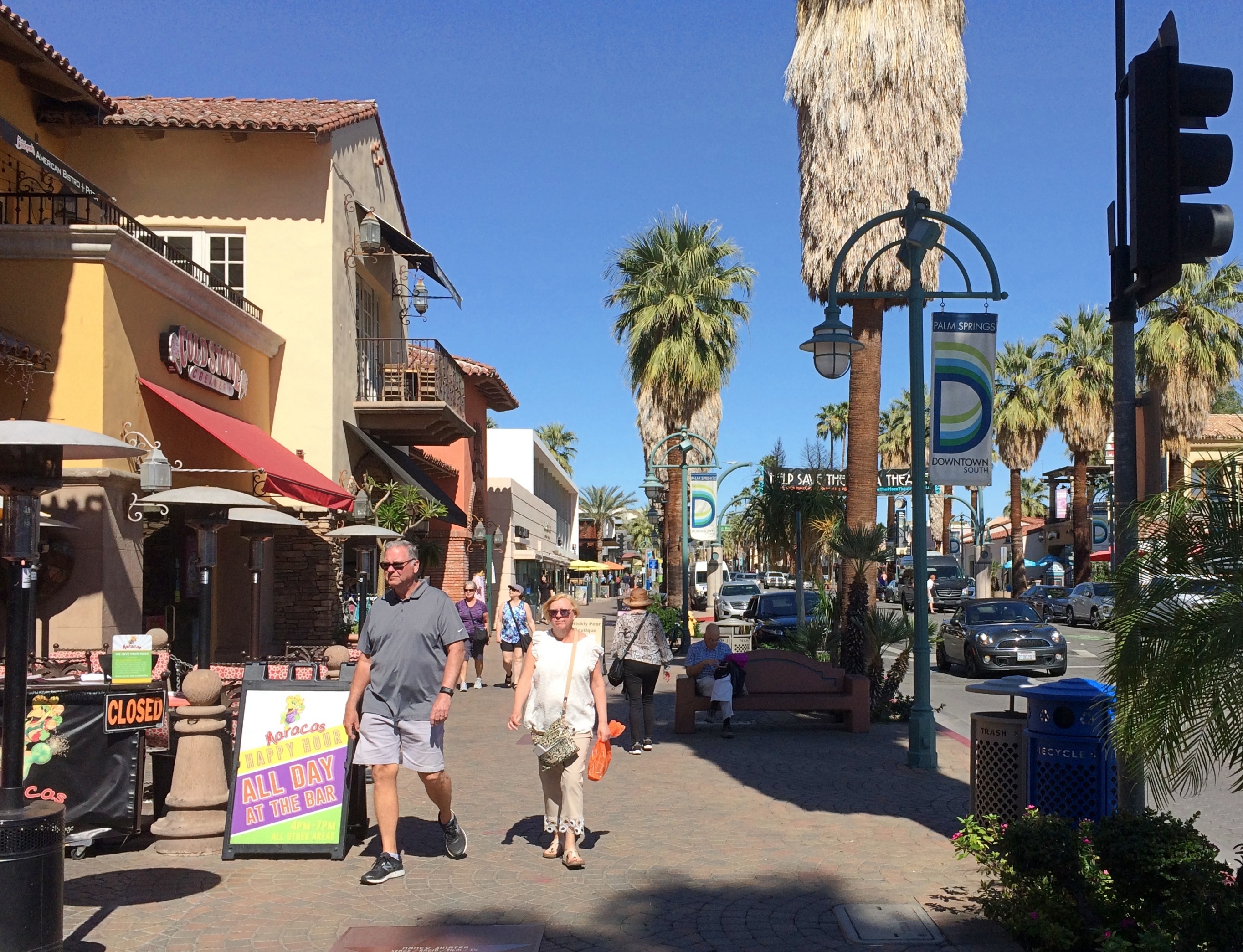 More, as in stars in the sidewalk, featuring celebrities who lived in Palm Springs at least part of the time. Such as good old Adam West.
More, as in stars in the sidewalk, featuring celebrities who lived in Palm Springs at least part of the time. Such as good old Adam West.
 Sonny Bono rates a bronze on the street, maybe for his efforts in Congress to ensure that his distant descendants retain the copyright to his songs.
Sonny Bono rates a bronze on the street, maybe for his efforts in Congress to ensure that his distant descendants retain the copyright to his songs.
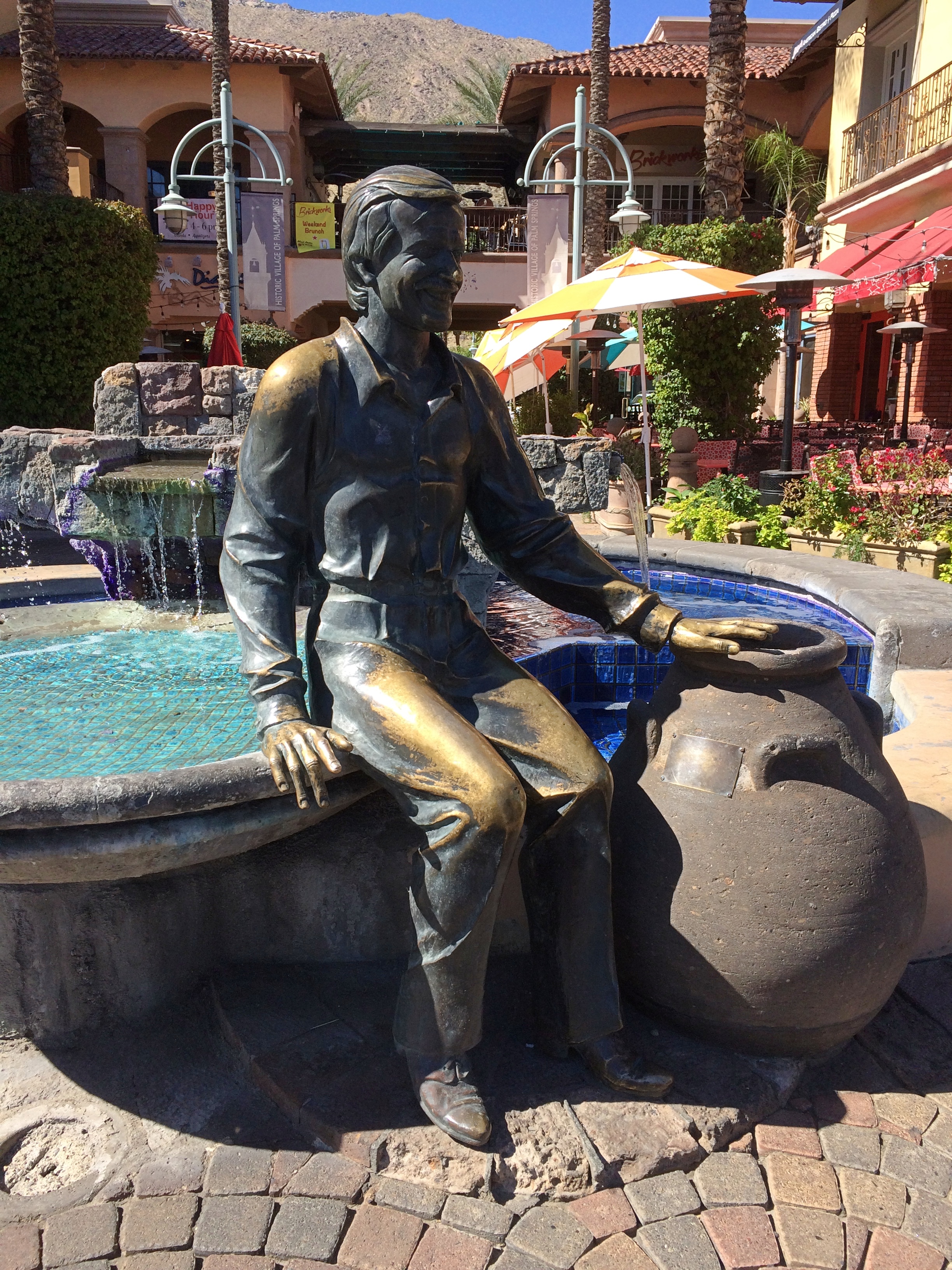 Lucy has a bronze, too. Here’s Steve with Lucy.
Lucy has a bronze, too. Here’s Steve with Lucy.
 Lunch, at Steve’s suggestion, was at the Haus of Poké just off Palm Canyon. The small chain’s web site tells us that “poké/poukei is a raw fish salad served as an appetizer in Hawaiian cuisine, and sometimes as an entree. Poké is the Hawaiian verb for ‘section’ or ‘to slice or cut.’ Typical forms are aku (an oily tuna) and he’e (octopus).”
Lunch, at Steve’s suggestion, was at the Haus of Poké just off Palm Canyon. The small chain’s web site tells us that “poké/poukei is a raw fish salad served as an appetizer in Hawaiian cuisine, and sometimes as an entree. Poké is the Hawaiian verb for ‘section’ or ‘to slice or cut.’ Typical forms are aku (an oily tuna) and he’e (octopus).”
Haus of Poké is on the Chipotle model — seems like a long time ago that that was novel — in which you pick a series of ingredients for your meal from a limited selection. Step 1, size. Step 2, base: brown rice, white rice, chips or salad. Step 3, protein: octopus, tofu, ahi tuna, salmon, yellowtail or shrimp. Step 4, mix-ins: edamame, cucumber, red onion, green onion or mango. Step 5, a selection of sauces.
I can’t remember exactly what I had now, though it involved white rice and salmon and other things, and it was delicious combo. I can see why Steve’s a regular.
Also not far off Palm Canyon: The Church of St. Paul in the Desert, Episcopal. Unfortunately closed.
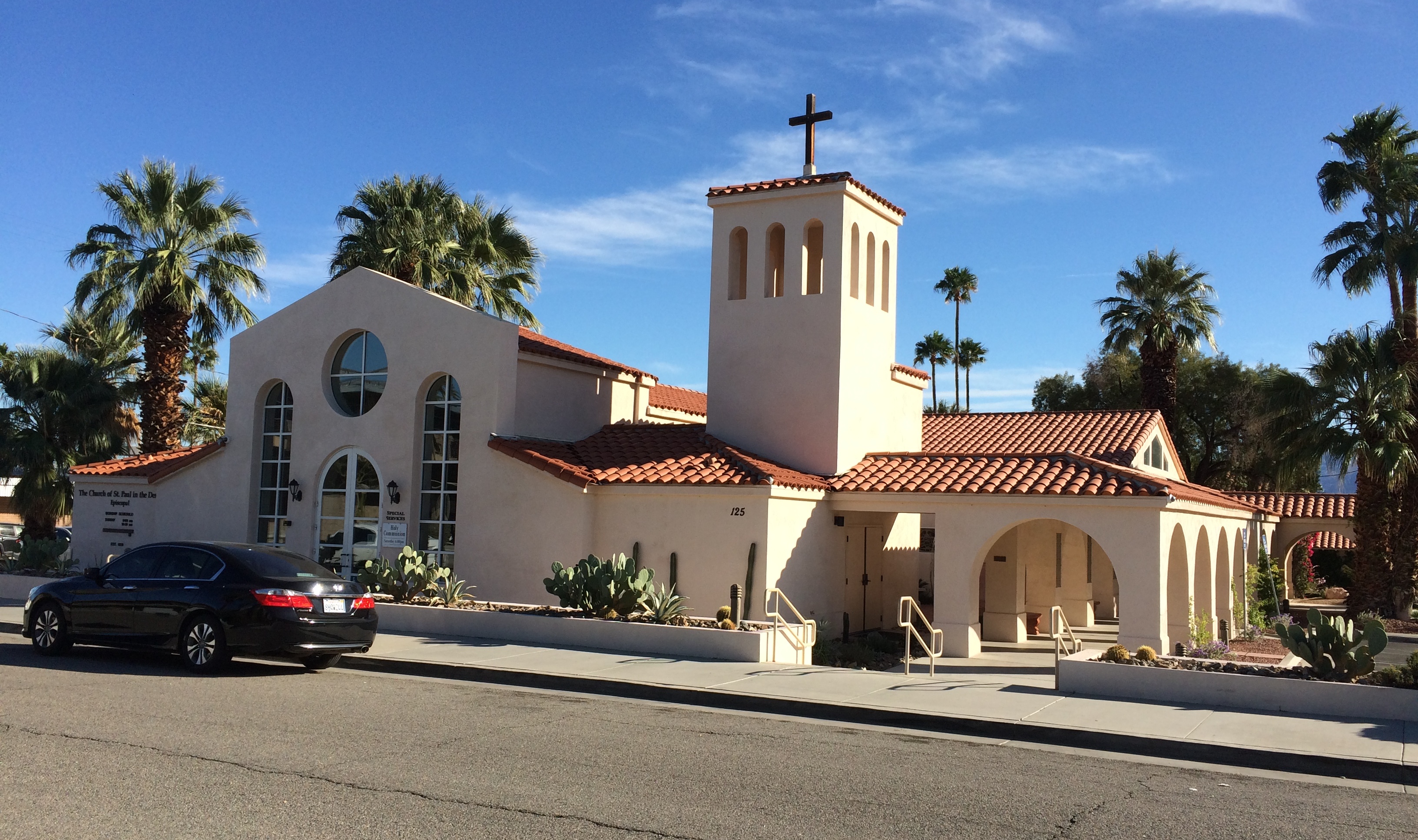 That afternoon, we went to Shields, a date farm that’s also a tourist attraction in Indio, California. The sign has been a fixture of the road since the 1950s.
That afternoon, we went to Shields, a date farm that’s also a tourist attraction in Indio, California. The sign has been a fixture of the road since the 1950s.
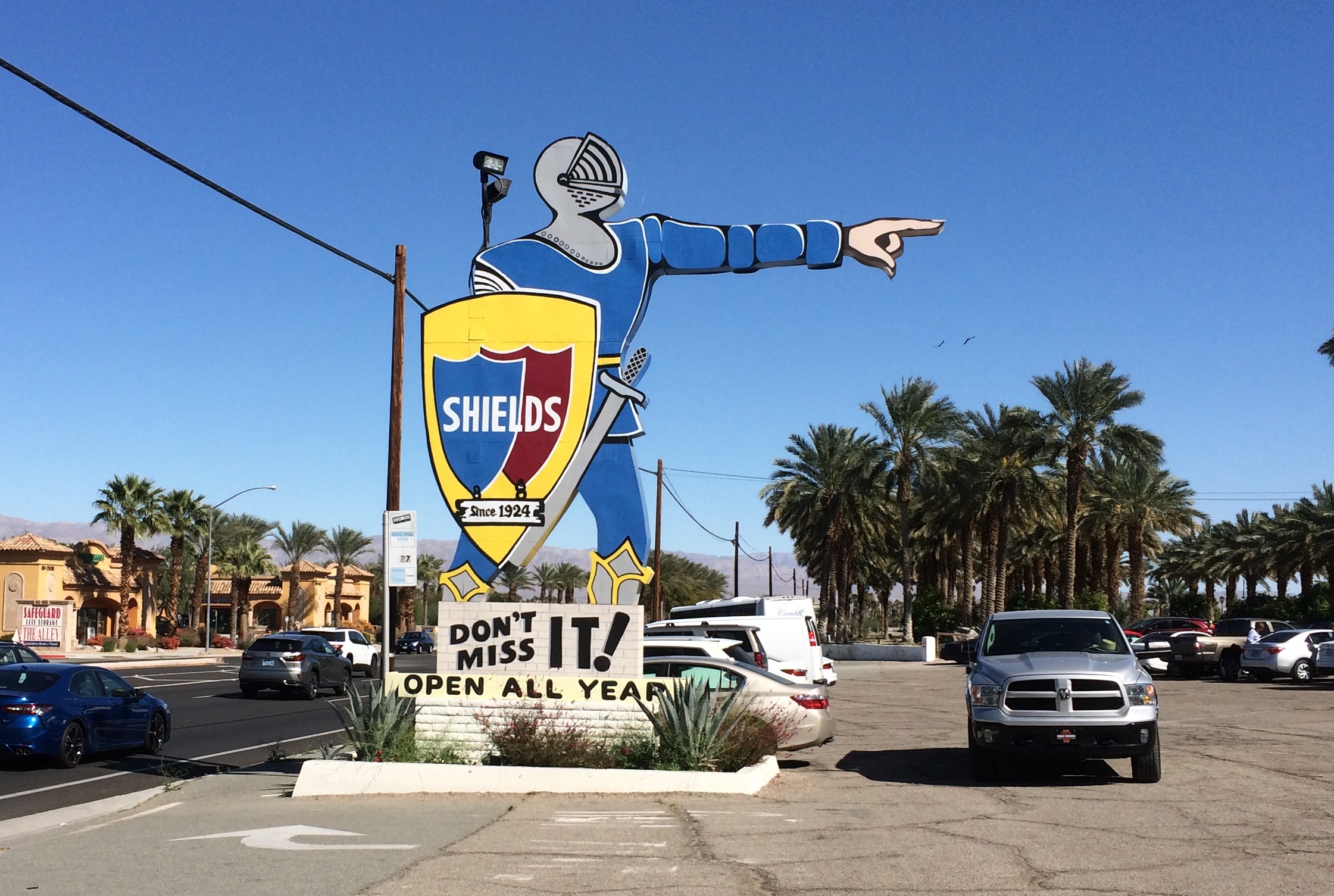 We stayed for a short film — Romance & Sex Life of the Date — which was something like a film you (I) might have seen in elementary school, and at times a little hard to stay awake for. But I can’t say I didn’t learn anything about date agriculture. I didn’t know, for instance, that about 90% of U.S. date cultivation is in the Coachella Valley (Wiki says more than 95%, but I’m citing the movie.)
We stayed for a short film — Romance & Sex Life of the Date — which was something like a film you (I) might have seen in elementary school, and at times a little hard to stay awake for. But I can’t say I didn’t learn anything about date agriculture. I didn’t know, for instance, that about 90% of U.S. date cultivation is in the Coachella Valley (Wiki says more than 95%, but I’m citing the movie.)
Steve said that Shields used to offer a selection of date samples on a table, as many as you cared to eat, but we didn’t see that. Turns out you have to ask for a sample now, which includes two dates. Is a new private equity owner clamping down on the freebies?
We bought two date shakes, which were good, and looked around a bit. You can’t wander around the date-growing grounds any more, either, Steve said. Used to be able to. The best view of the Shields date trees turned out to be from the edge of the parking lot.
 After Shields, we returned to Steve’s house to loaf around (now there’s a verb we shouldn’t let die). I wasn’t completely idle, however, since I spent time writing postcards. In the evening, we had a pleasant dinner and then sat around and talked and watched TV. The Food Network, I have to say, is a whole other world I knew little about.
After Shields, we returned to Steve’s house to loaf around (now there’s a verb we shouldn’t let die). I wasn’t completely idle, however, since I spent time writing postcards. In the evening, we had a pleasant dinner and then sat around and talked and watched TV. The Food Network, I have to say, is a whole other world I knew little about.
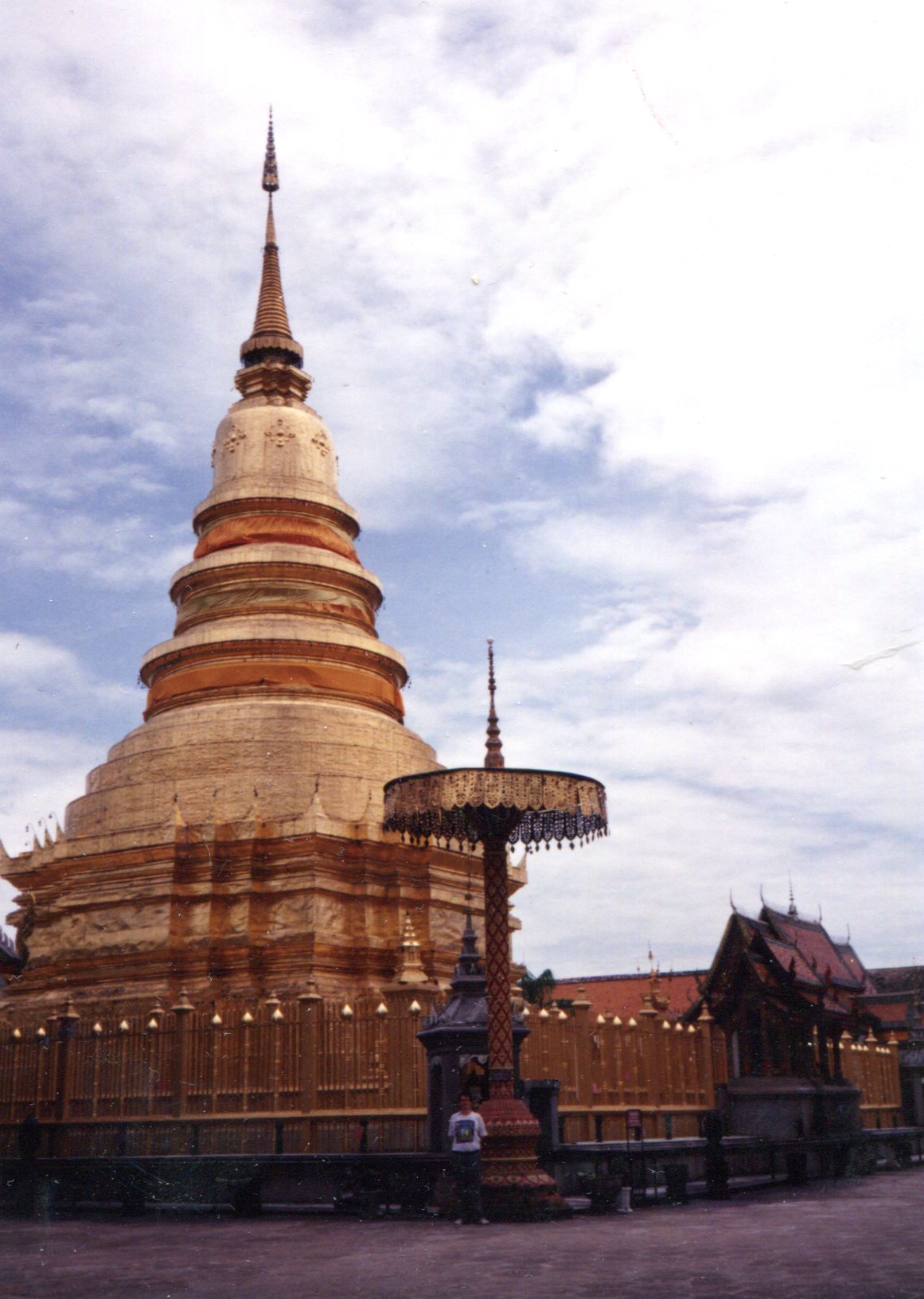 Below, the part of the temple known as Viharn Phra Chao Thunjai, according to this site, which has much more about the temple grounds, whose original stupa goes back to the 9th century, with a major expansions in the 11th and later centuries.
Below, the part of the temple known as Viharn Phra Chao Thunjai, according to this site, which has much more about the temple grounds, whose original stupa goes back to the 9th century, with a major expansions in the 11th and later centuries.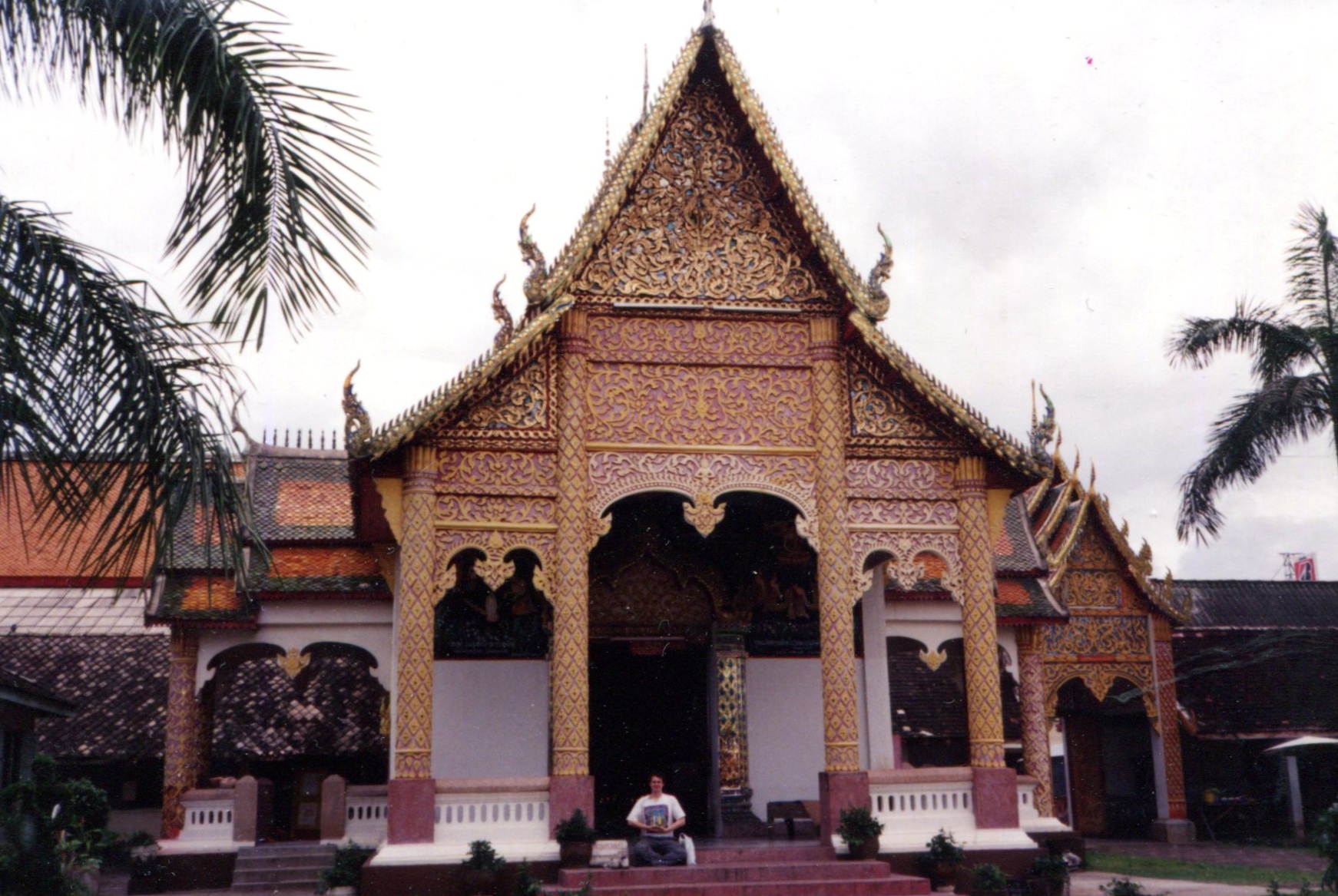 The bell tower.
The bell tower.